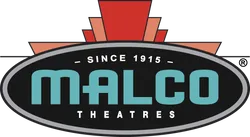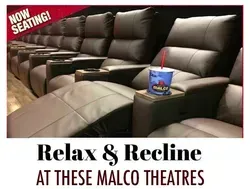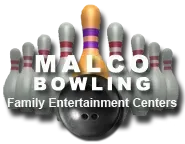
Malco Theatres go all-in on laser with Cinionic
Largest deployment of Cinionic’s Laser Light Upgrade solution in the U.S.
Cinionic, the world’s leading provider of laser cinema solutions, announces a deal with Malco Theatres, Inc., for a circuit-wide upgrade to laser projection. The project leverages Cinionic’s innovative Laser Light Upgrade solution to revitalize Malco’s legacy Barco Series 2 projectors with laser technology in the largest U.S. deployment of LLUs to date. Malco is the 8th largest cinema chain in the U.S. with 371 screens across 37 locations. As part of the agreement, Malco is also taking advantage of Cinionic’s extended warranty option for laser-retrofitted Series 2 projectors, extending their coverage well-beyond the industry-standard.
“We are excited to continue our partnership with Cinionic, as we remain dedicated to bringing the best possible presentations to our customers,” says Wes Lunsford, VP Digital Operations, Malco. “Upgrading our projectors to laser will enhance brightness and contrast for our patrons to further enjoy movies the way they were meant to be seen, on the big screen.”
Advantages of Laser Projection
Cinionic’s Laser Light Upgrades offer a sustainable and efficient path to laser projection. The solution offers all of the benefits of laser, including lower energy costs, simplified operations, and a reduced carbon footprint; while delivering exceptional onscreen movie presentation for audiences. Theaters moving to laser with Cinionic’s Laser Light Upgrades are also eligible to further extend the existing warranty on their legacy Barco Series 2 equipment, complimenting the standard 5-year coverage on the new laser components included in the upgrade.
Malco has long placed an emphasis on the importance of light levels in their movie presentation, beginning with the implementation of Barco Series 2 digital projection for their theaters. Now with Laser Light Upgrades, they are extending the value of that investment.
“Malco’s dedication to cinematic excellence continues to advance the moviegoer experience in the U.S.,” says Wim Buyens, CEO, Cinionic. We are proud to expand our long-standing relationship and support their transition to laser projection, wowing the next generation of audiences.”
The Core Technology: Laser Projectors
At the heart of Malco’s enhanced cinematic experience are state-of-the-art laser projectors. These projectors differ from their traditional counterparts by using lasers to generate light, which then passes through a digital micromirror device (DMD) or DLP chip. This chip is composed of millions of tiny mirrors, each one reflecting light to create the pixels that make up the image on the screen.
Superior Image Quality
The precision of laser light allows for an image with an incredibly high resolution. Where traditional digital projectors might struggle with fine detail, laser projectors excel, capturing everything from the subtle textures of fabrics to the individual leaves on distant trees. This clarity remains consistent no matter the size of the screen, ensuring that even viewers sitting in the back of the theater enjoy a crisp, clear picture. These projectors are engineered for performance over time. Traditional bulb projectors lose brightness as their lamps age, but laser projectors maintain a consistent luminance throughout their lifespan. This means that a movie will look just as bright and vibrant years down the line as it did on its opening night. Furthermore, laser projectors operate with greater energy efficiency and require less maintenance, reducing downtime for bulb changes and other servicing.
Enhanced Viewing Experience
Laser projection offers a uniform brightness across the entire screen. This uniformity ensures that every seat in the house has an optimal viewing experience without variations in picture quality. Traditional projectors can sometimes produce an image that is brighter in the center than at the edges; laser projectors eliminate this issue entirely. The superior color and brightness consistency also contribute to reducing viewer fatigue. In long movies or double features, audiences are less likely to experience eye strain thanks to the stable and comfortable light levels produced by laser projectors. Additionally, these projectors excel in ambient light conditions, meaning that even if some light makes its way into the theater—a common occurrence during daytime showings—the picture remains clear and unaffected. Moreover, lasers can achieve a higher frame rate than traditional digital projectors. This allows for smoother motion in high-speed action sequences and a more lifelike portrayal of movement on screen. With this technology, filmmakers are empowered to create and convey their visions without technical limitations imposed by older projection methods.







